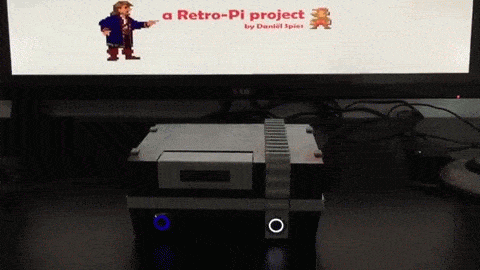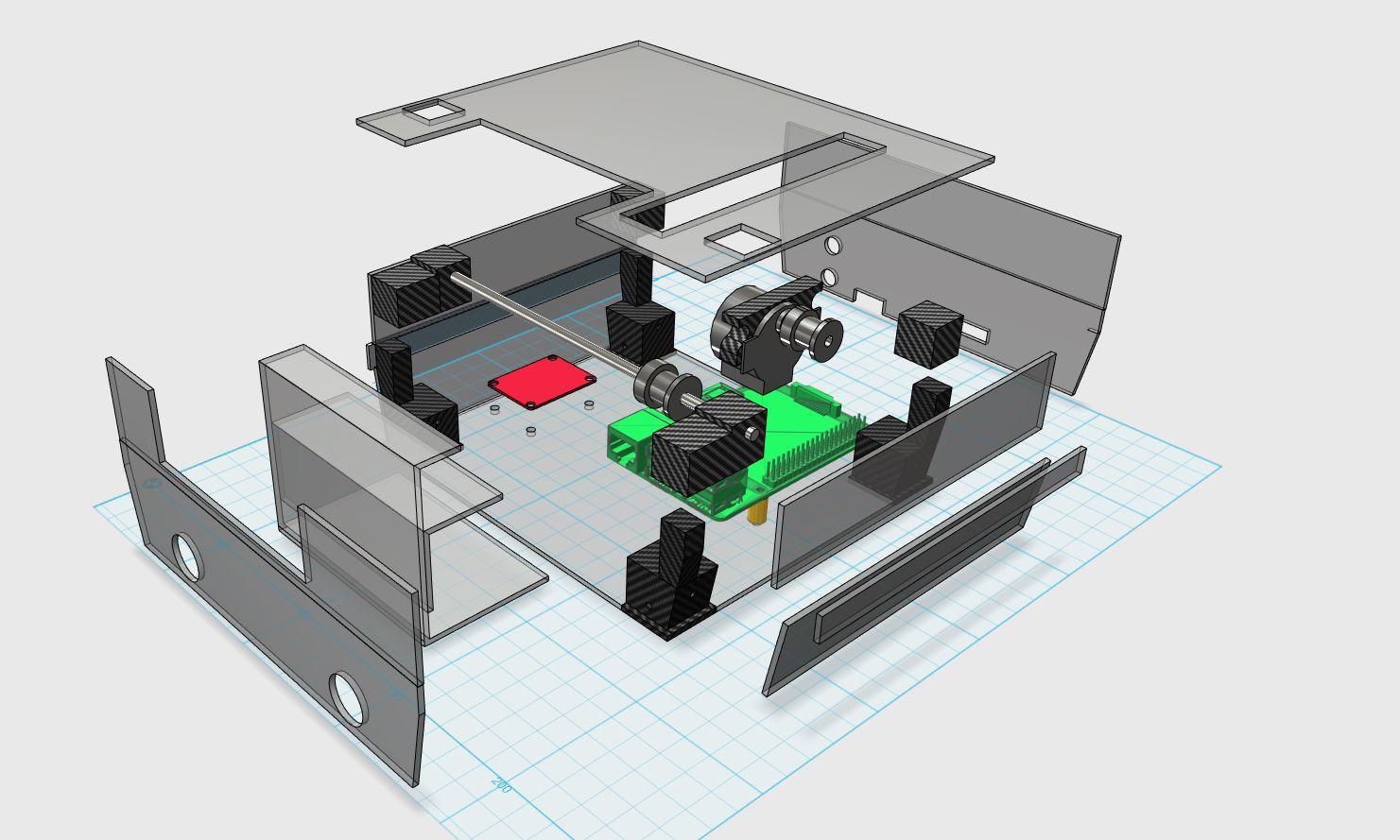 Poof! And the rabbit pops out of the hat! This is what some may consider to be “magic,” while others will simply call it an illusion. Obviously the latter is actually the case, as most 21st century humans don’t believe in actual magic. However, one Dutch magician, named Daniel Spies, decided to use his knowledge of electronics to learn a bit more about Raspberry Pi and 3D printing. In doing so, he created a machine that may just make some of us question our theories of magic…or perhaps not.
Poof! And the rabbit pops out of the hat! This is what some may consider to be “magic,” while others will simply call it an illusion. Obviously the latter is actually the case, as most 21st century humans don’t believe in actual magic. However, one Dutch magician, named Daniel Spies, decided to use his knowledge of electronics to learn a bit more about Raspberry Pi and 3D printing. In doing so, he created a machine that may just make some of us question our theories of magic…or perhaps not.
The fully 3D printed Nin10do is a retro-style game system based entirely on the old-school 1986 Nintendo Entertainment Systems (NES) that many of us grew up playing. We’ve seen developers create game consoles in the past by utilizing 3D printing technology, combined with the programming of microcomputers, but Spies’ Nin10do is something totally unique, and in metaphorical terms, quite magical.
“A few months ago I ordered the Raspberry Pi model B+,” Spies tells 3DPrint.com. “I was very enthusiastic about it. To control lights, motors etc with a simple scripting language would be great for complicated magic tricks! When I was learning to write Python I saw many videos in which guys are hacking original NES consoles and installing a Raspberry Pi in it.”
Spies didn’t think that these hacks looked very professional though, so he set out to create the first professional-looking gaming console which would allow him to play his favorite old-school games. At the same, he wanted it to be a lesson for himself in operating and learning to use Raspberry Pi. Because of this, he was sure to add in some programmable LEDs, as well as a stepper motor which would automatically open the lid of the console.
 Because Spies doesn’t have a 3D printer himself, he contacted Printics, a company that is listed on 3D Hubs, to have all of his designs printed for him. First he drew out his design for the machine on a piece of paper, before designing it in Autodesk 123D. He sent these files to Printics, who then 3D printed them for him. Then Spies had to program his Raspberry Pi, assemble the 3D printed parts, and then test and tweak it.
Because Spies doesn’t have a 3D printer himself, he contacted Printics, a company that is listed on 3D Hubs, to have all of his designs printed for him. First he drew out his design for the machine on a piece of paper, before designing it in Autodesk 123D. He sent these files to Printics, who then 3D printed them for him. Then Spies had to program his Raspberry Pi, assemble the 3D printed parts, and then test and tweak it.
In designing the Nin10do emulation console, Spies created several rules that he made himself follow. They included the following:
- The Python script must be run in the background without losing any speed for the emulators to run.
- The lid must be automatically opened and closed but not break when accidentally opened or closed twice.
- The design must be 3D drawn in 123D and the full case must be printed in 3D.
- The console must have a proper on/off switch without damaging the software or SD card.
Spies successfully accomplished all of these things, and the Nin10do console turned out extraordinarily well. While you can obviously tell that it was modeled after the orginal 1986 version of the console, it also features a new, fresh, and modern look to it.
“The print is done in XT Co Poylester and not in the more commonly available PLA or ABS,” Spies tells us. “Printic sent me a sample in both PLA and XT and the difference was pretty big. The console turned out to be really cool, and I have recently upgraded it with the new Pi model 2. It looks even better in real life then in the photos. It was ‘hell’ to get it working. Although the design was thought out well, the first software tests were horrible. After solving 1001 issues and gaining a ton of experience, the Nin10do is finally finished.”
Unlike the original console, which loaded games under the front lid, the lid of this machine opens to reveal controller USB ports. When the game console is ready, it automatically opens so a controller can be plugged in. One problem that arises with those who wish to play retro game consoles today is the fact that they do not include any digital input/outputs, but rather the old-style analogue connections. The Nin10do, however, does include an HDMI connection.
In all, the case cost Spies €160 to have printed, with the total cost being around €300, including the Raspberry Pi — probably pretty close to what the original NES cost when it was first released in 1986. Spies’ version, however, can not only play traditional NES games, but it can play virtually any emulator games currently available. As you can see in the video below, he demos it playing Monkey Island, Kings Quest, Super Mario World, Super Mario Brothers, and more.
What do you think of Spies’ incredible 3D printed Nin10do game console? Discuss in the Nin10do forum thread on 3DPB.com. Check out the videos of the console in action and being constructed below.

Subscribe to Our Email Newsletter
Stay up-to-date on all the latest news from the 3D printing industry and receive information and offers from third party vendors.
You May Also Like
MX – Machining Transformation: Revolutionizing Manufacturing with Additive Technologies
The machining industry is experiencing a profound transformation, propelled by four key trends: Process Integration, Automation, Digital Transformation (DX), and Green Transformation (GX). Central to this evolution are Additive Manufacturing...
Beyond DeepSeek: Reimagining AI Integration in China’s 3D Printing Industry
China’s recent breakthrough in AI development, demonstrated by DeepSeek‘s success, offers important insights into the future of the country’s industrial AI applications. Despite chip restrictions, DeepSeek achieved remarkable performance through...
Cutting-Edge or Cutting Corners? The In-situ Inspection Dilemma
For years, in-situ monitoring has been positioned as the answer to real-time quality control in additive manufacturing (AM). The promise? Immediate insights into the build process, fewer post-inspection costs, and...
3D Printing Webinar and Event Roundup: January 26, 2025
In this week’s roundup of 3D printing webinars and events, we’ve got a variety of offerings to tell you about, ranging from advanced AM training, robotic simulation for aerospace, and...































